Give me a huge bowl of lo mein and I will be the happiest person in the room.
I haven’t eaten in a mall food court in ages, but when I did, I would always order the biggest container of lo mein. It could be beef or chicken lo mein, heck, it could be plain with only sauce. I’m just all about the noodles. This year, our lunar new year feast is going to be two steamed fish, wonton, chow mein, and this lo mein. Yes, you read that right, two kinds of noodles.
What is lo mein?
Lo mein is a super popular noodle dish that you’ll find both at restaurants and made at home. In Cantonese, lo mein means “mixed noodles”. In Mandarin, it’s pronounced “lao mian” and translates exactly the same. Essentially, it’s egg noodles mixed with sauce – somewhat similar to chow mein, but not quite.
In truth, it can mean a variety of different kind of noodle dishes, much like how you can order spaghetti in a variety of ways. In North America, we tend to associate lo mein with the American Chinese take out style of noodles: somewhat thick egg noodles stir fried and tossed with a soy based sauce, vegetables, and proteins.
Technically there are two kinds of lo mein, Cantonese Hong Kong style and American Chinese take out style. Both are a mixed stir fried noodle dish.
- Cantonese lo mein is a kind of deconstructed soup noodle: thin and chewy egg noodles served on a plate with toppings and a bowl of soup on the side. The sauce for the noodles isn’t mixed in. Instead, you’re supposed to stir it into the noodles yourself. “Lo” means to mix or stir. Mein, of course, means noodles.
- American Chinese lo mein is a stir fry noodle dish: thick noodles mixed with a soy sauce based sauce and toppings like beef, pork, chicken, or vegetables.
Both are delicious!
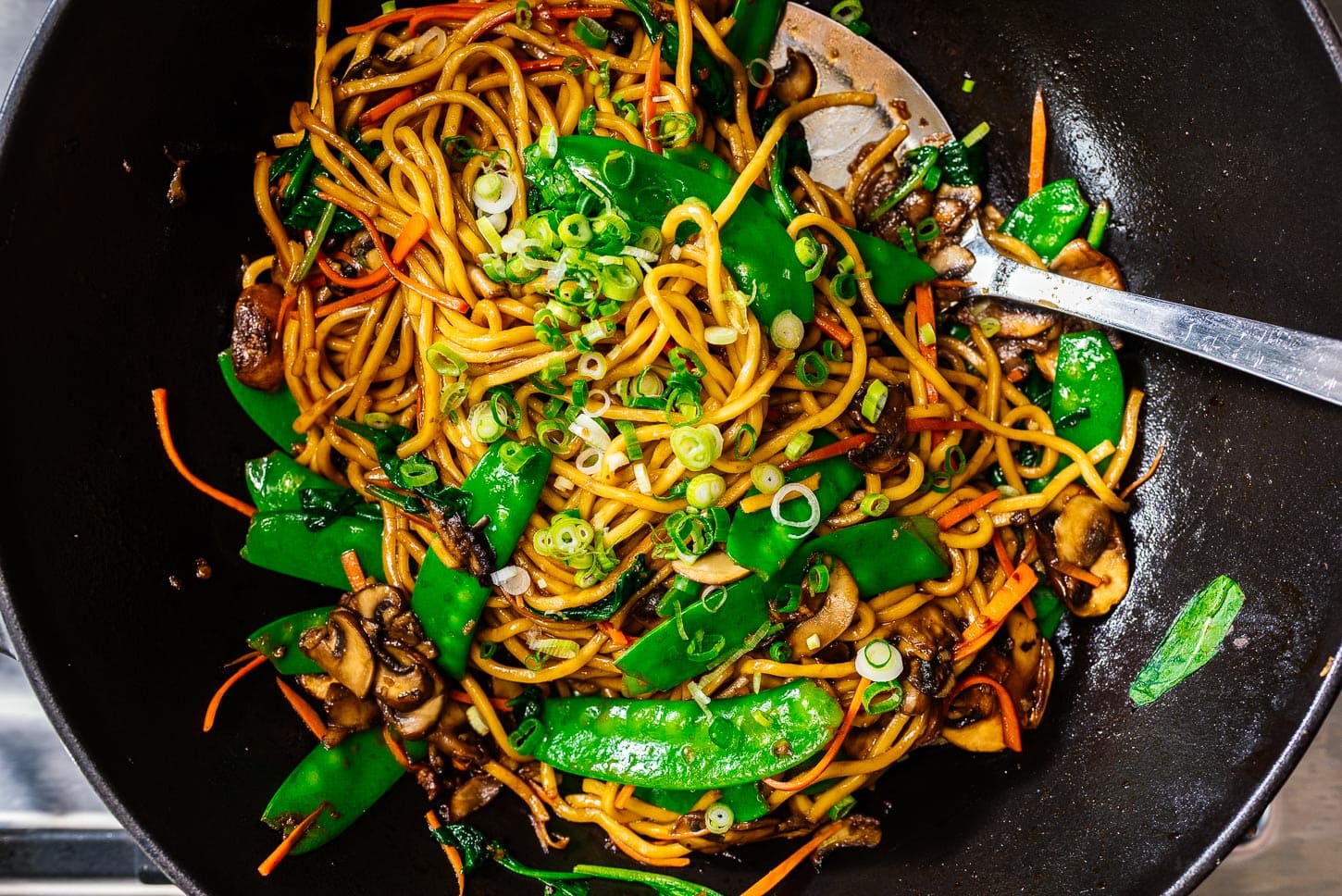

Chow mein vs lo mein
The main difference between lo mein and chow mein are the noodles used. Lo mein noodles are thicker and chewier and chow mein noodles are thinner and crisper. Chow mein is cooked longer in the pan so the noodles become crispy and lo mein is simply tossed so the noodles stay soft. Pictured below: soy sauce chow mein.
Both kinds of noodles are made with flour, water, eggs, and kansui (which is what makes the noodles yellow and chewy). They differ mostly in hydration and shape. Lo mein noodles have a higher hydration and are thicker which makes them chewier and more plush. Chow mein noodles are thinner, drier, and crisp up more because they have a lower hydration. After cooking, lo mein noodles are soft and supple and chow mein noodles are springy and chewy.
Once you have dark soy sauce, you should definitely try this chow mein recipe.
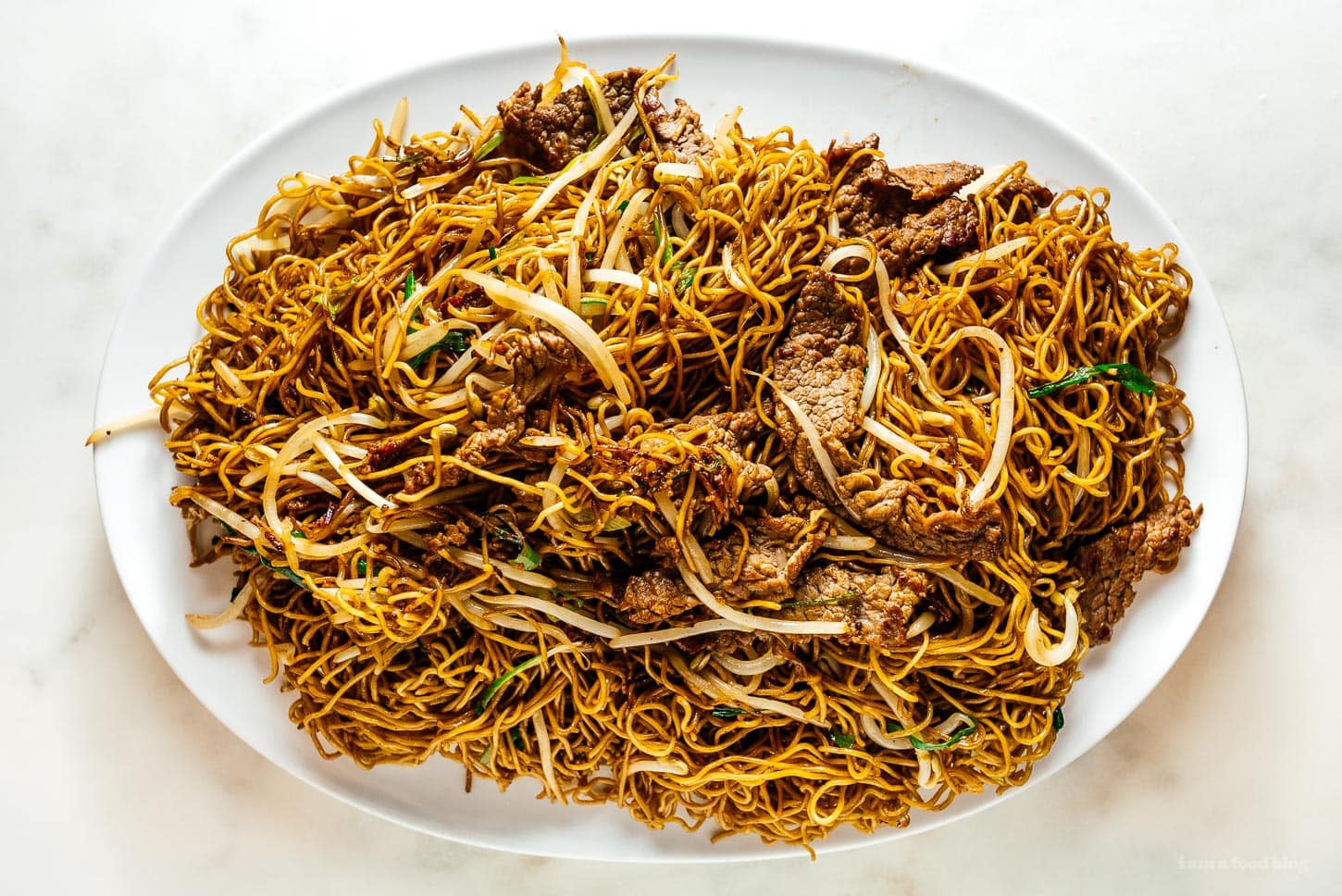

How to make lo mein
This is probably the easiest take out dish you can make. All you need to do is make a quick sauce, cook the noodles, add some veggies, and toss:
- Make the sauce. In a small bowl, mix together light and dark soy sauce, toasted sesame oil, sugar, and ground ginger.
- Cook the noodles. Cook the noodles according to the package, drain, and set aside.
- Fry the aromatics. Heat up a bit of oil and lightly fry some garlic until it smells amazing.
- Add the mix-ins. I kept this simple with veggies, but you can add protein too, more on that later.
- Toss. Add the noodles and sauce into the pan and toss everything until it’s evenly coated.
- Enjoy. That’s it! Slurp away.
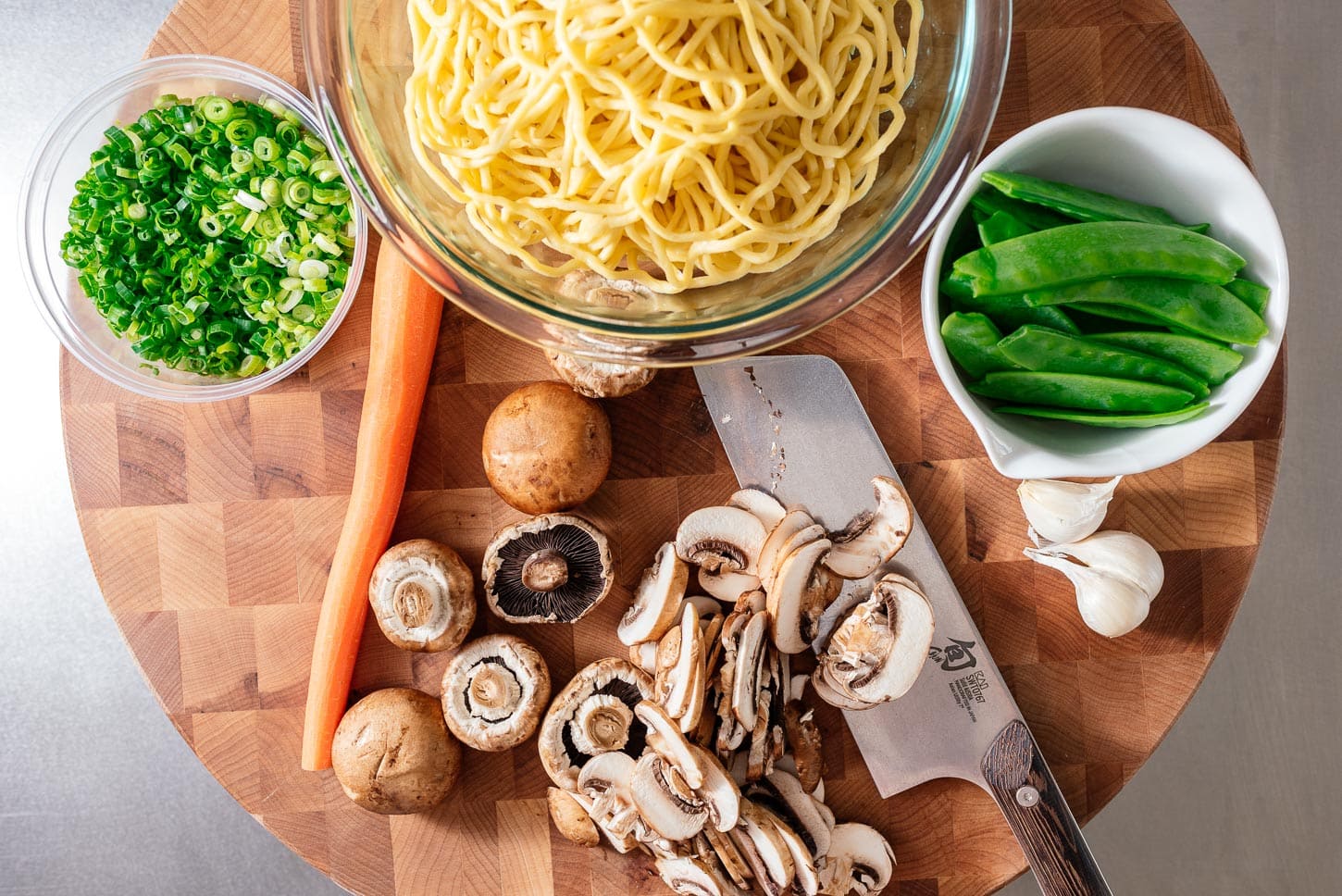

Lo mein noodles
For lo mein you need lo mein noodles. You can find them at your local Asian grocery store or you can substitute spaghetti or any long pasta.
- Fresh pre-cooked lo mein noodles. In an ideal world, you’ll find cooked lo mein noodles in the refrigerated section of your local Asian grocery store. Sometimes they’re called oil noodles. They keep them with the fresh noodles and dumpling wrappers. Since they’re already cooked, you don’t need to boil them. Open up the package, place the noodles in a colander, and give them a rinse with hot tap water, loosening them with your hands. Drain well.
- Fresh uncooked lo mein noodles. You’ll also find fresh uncooked noodles in the same section. Cook them according to the package and drain thoroughly.
- Spaghetti. If you can’t find lo mein noodles, you can easily substitute spaghetti. Dried spaghetti is ideal, and you can even use any other long pasta of your choice.
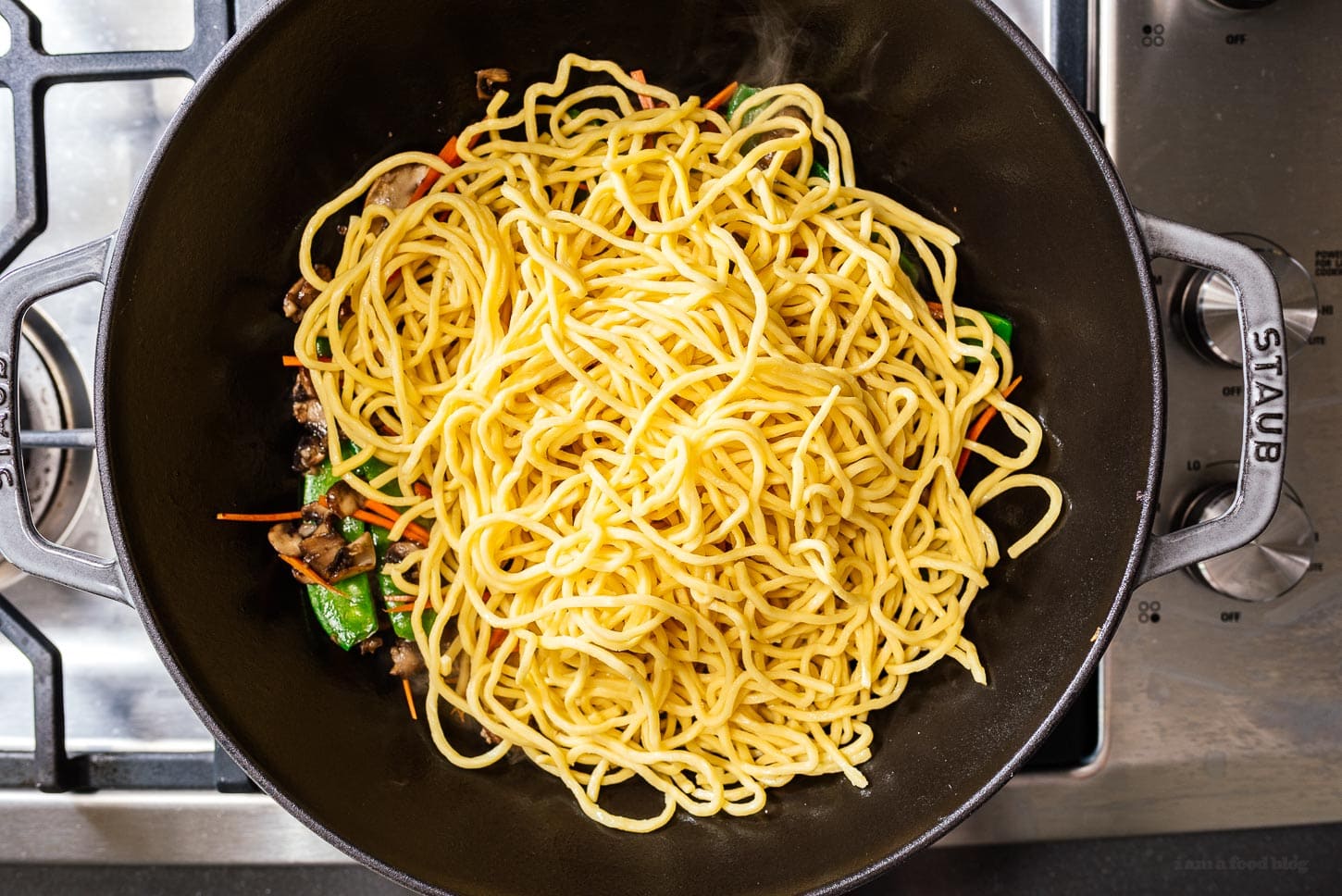

Lo mein sauce
The sauce is what makes this dish so addictive. It’s a simple umami filled mix of light and dark soy sauce, toasted sesame oil, sugar, and a hint of ginger.
It’s super easy to make a batch of lo mein sauce and keep it in the fridge so you can easily make lo mein whenever the craving hits.
In a large measuring cup, mix together:
- 1/2 cup light soy sauce
- 1/4 cup dark soy sauce
- 1 tbsp plus 1 tsp toasted sesame oil
- 1 tbsp plus 1 tsp sugar
- 2 tsp ground ginger
Because all of the items are fridge stable, you can mix up a bit batch, pop it in a clean air tight container and then just place it in the fridge and add it to your noodles to taste. You’ll need about 1/4 cup of sauce for each batch of lo mein, but you can add more or less according to how saucy you like your noodles.
Note: Many lo mein sauces on the internet contain oyster sauce and while oyster sauce is super delicious, we kept it vegetarian/vegan here without. If you want to add oyster sauce for an extra bit of umami, you can add 2 tbsp oyster sauce to the above recipe.
What is dark soy sauce?
Dark soy sauce is a thick, dark soy sauce that’s slightly less salty then regular soy sauce. It’s extra dark from a longer fermentation of soy beans. You might be tempted to skip dark soy sauce, but if you have the chance to buy a bottle, do it because it’ll last you a long time and bring a lot of joy into your life! Dark soy sauce adds a beautiful glossy brown to Chinese dishes and also adds caramel sweetness and depth. You can find it online or at your local Asian grocery store.
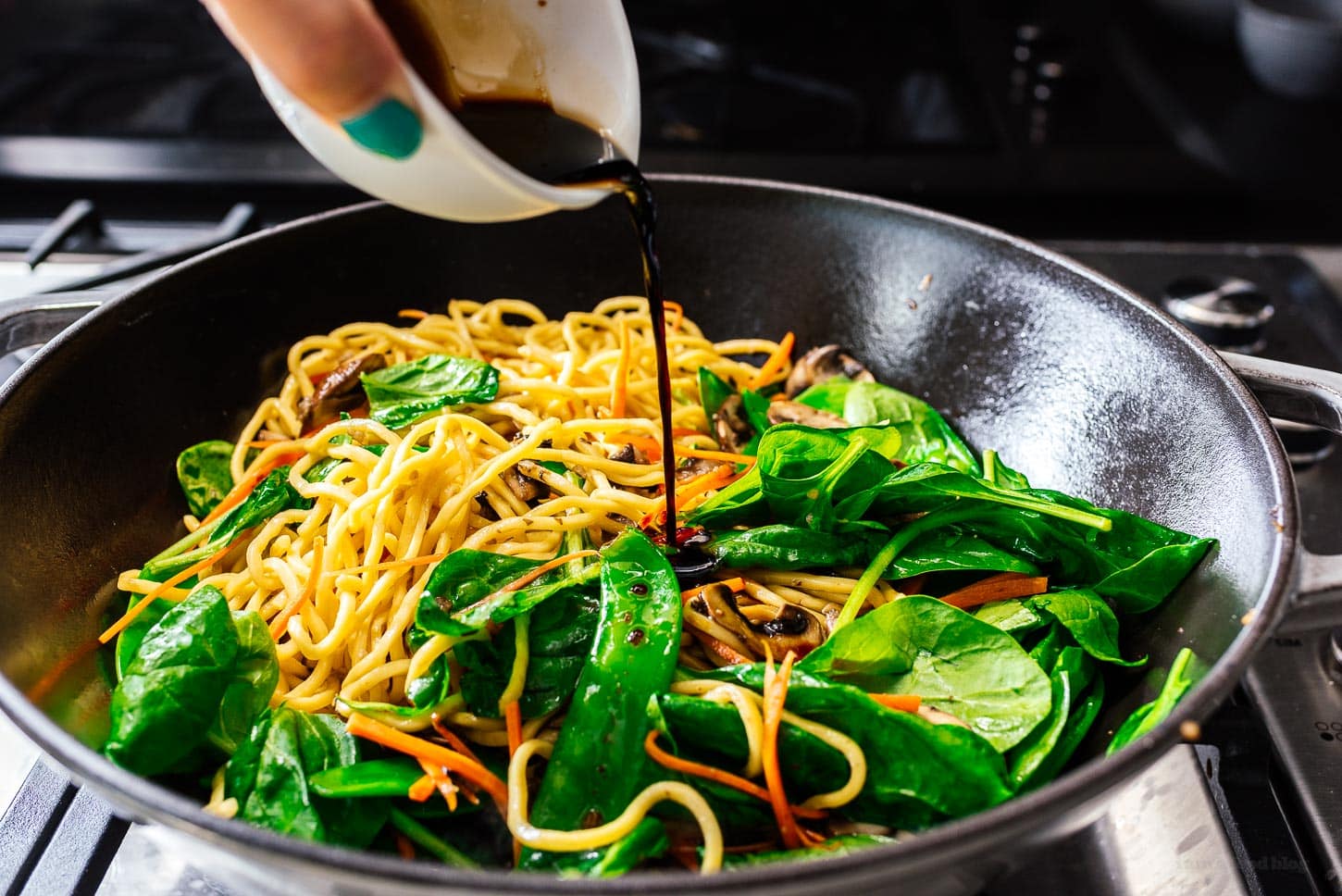

Toasted sesame oil
Don’t sleep on toasted sesame oil. It’s pure nutty, toasty aromatic umami. The toasted stuff is completely different from regular sesame oil. Our favorite is Kadoya, which comes in an iconic yellow topped bottle. It’s available online and in most grocery stores.
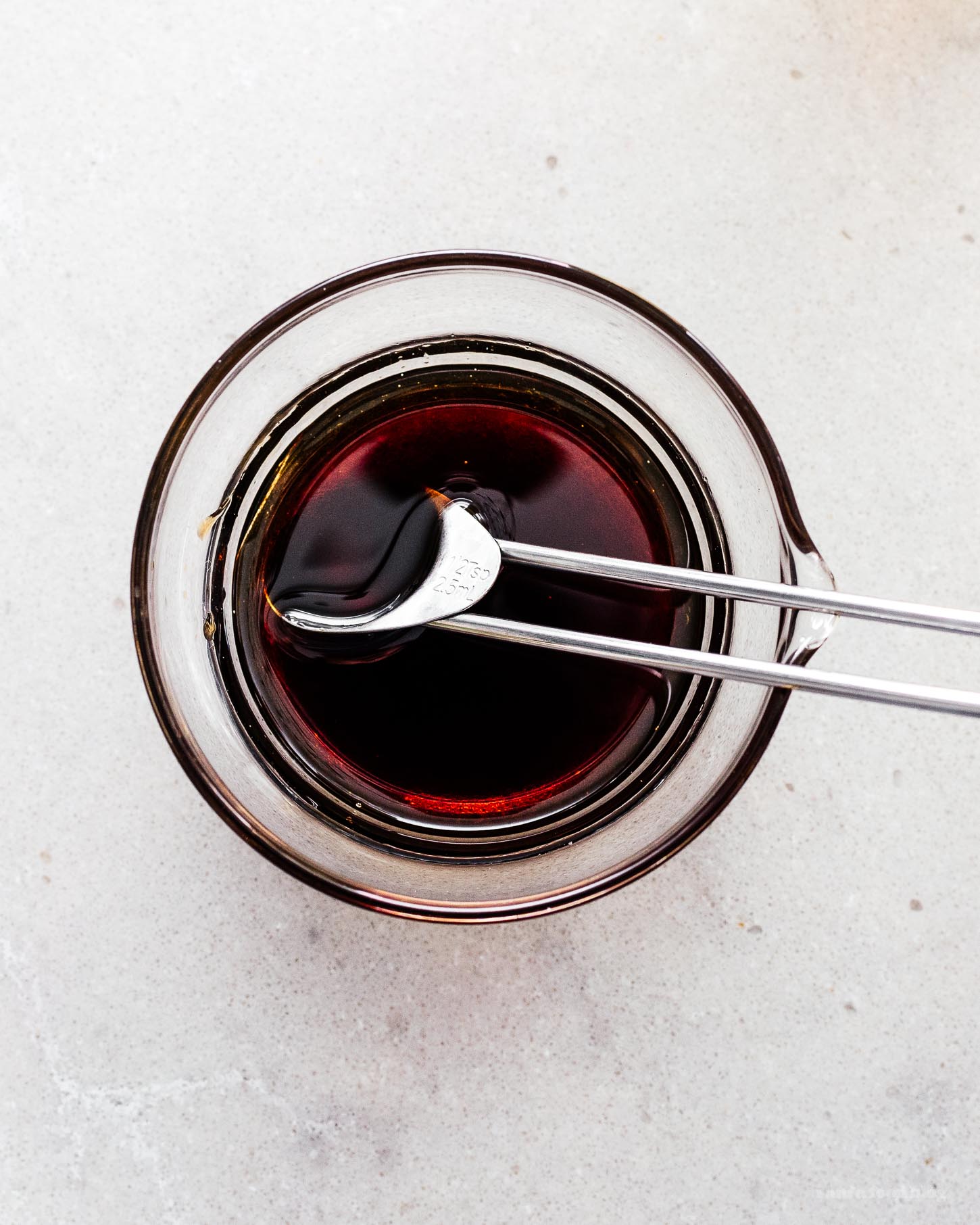

Mix ins
The beauty of lo mein is that you can add virtually anything to it and it will taste amazing. Any and all proteins and vegetables are welcome to the party. Just make sure to cut everything into bite size pieces.
How to velvet meat
This recipe is completely vegan, but we often make it with either chicken, pork, or beef. The secret to super tender, juicy meat in lo mein (or all Chinese stir fries) is velveting. Velveting is the classic Chinese technique of marinating meat with cornstarch, oil, and seasonings. This helps tenderize and season the meat. The cornstarch gives the meat a small barrier against heat so it stays extra juicy when you’re cooking it.
Chicken lo mein
Slice 1/2 lb chicken breast or thighs into 1 inch pieces and toss in a quick marinade: 1 tbsp soy sauce, 1 tsp dark soy sauce, 1 tsp oil, and 1 tsp cornstarch. Add to the pan after the garlic is fried and cook, stirring occasionally until cooked through. Proceed with the rest of the recipe.
Beef
Slice 1/2 lb sirloin, flank, or tri-tip steak into 1 inch pieces and toss in a quick marinade: 1 tbsp soy sauce, 1 tsp dark soy sauce, 1 tsp oil, and 1 tsp cornstarch. Add to the pan after the garlic is fried and cook, stirring occasionally until cooked through. Proceed with the rest of the recipe.
Pork
Slice 1/2 lb pork chop or pork shoulder into 1 inch pieces and toss in a quick marinade: 1 tbsp soy sauce, 1 tsp dark soy sauce, 1 tsp oil, and 1 tsp cornstarch. Add to the pan after the garlic is fried and cook, stirring occasionally until cooked through. Proceed with the rest of the recipe.
Shrimp
Peel and devein 1/2 lb shrimp and toss in a quick marinade: 1 tbsp soy sauce, 1 tsp dark soy sauce, 1 tsp oil, and 1 tsp cornstarch. Add to the pan after the garlic is fried and cook, stirring occasionally until cooked through. Proceed with the rest of the recipe.
Spicy lo mein
To make these noodles spicy, stir in 1-2 tsp of your favorite hot sauce into lo mein sauce. I like using chili oil or chili crisp – my favorite is Lao Gan Ma.
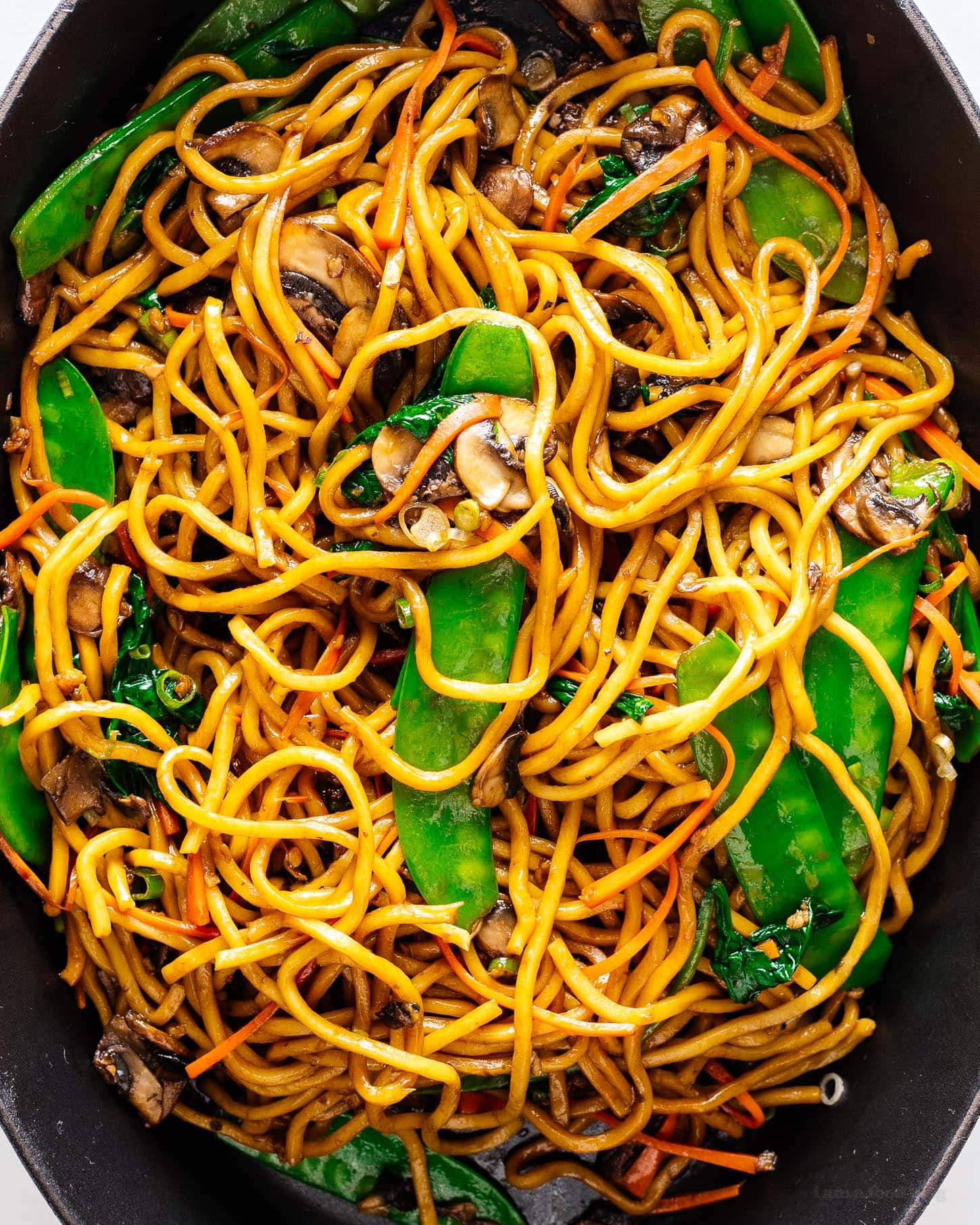

Why you should make lo mein at home
- It’s fast. Making lo mein is not some complicated affair, it comes together in one pan and it’s fast! Faster even than ordering takeout. Plus it’ll be fresher and hotter.
- It doesn’t need any fancy ingredients, just one good bottle of soy sauce (two if you’re feeling fancy), toasted sesame oil, and fresh or ground ginger. Super easy!
- You can add anything you want to it. Think clean out your fridge style, add all and any veggies that are languishing in the crisper. Veggies for health, noodles for fun!
- The sauce is delicious on EVERYTHING. The sauce is what makes these noodles delicious and super addictive. You can even make up a big batch, keep it in a squeeze bottle in the fridge, shake it up and then just squeeze it into the pan.
FAQ
- What kind of noodles
Oil noodles are my noodle of choice (see above in the noodles section) but you can definitely use spaghetti or buy dried noodles on amazon. Wu Mu brand dry noodles, from Taiwan are egg free and really popular. - Are lo mein noodles gluten free?
Lo mein noodles aren’t gluten free but if you like, you can make this recipe with rice noodles, which are gluten free. You need to make sure to rinse off the rice noodles after cooking in cool water because they have a tendency to stick together. After you rinse them off, follow the recipe as usual. - Why do you need two types of soy sauce
The mix of dark and light soy sauce is what makes this recipe shine! The light soy sauce adds saltiness and umami and the dark soy sauce adds a beautiful glossy color, a touch of caramel sweetness, and depth. If you don’t have dark soy sauce, you can skip it, but it’s what really makes this recipe a winner.
Fresh lo mein noodles
You can find fresh noodles in one of the refrigerated fresh noodle section of your local Asian grocery store. If you live in America, a popular brand is Twin Marquis. They have several packages of lo mein noodles, ones that are uncooked and ones that are cooked. The cooked ones are called “cooked noodle” or oil noodles. For the uncooked noodles, make sure to follow the package directions for boiling and draining before using in this recipe.
What to serve with lo mein
- Sesame chicken
- Potstickers
- Garlicky gai lan
- Spicy wonton
- Honey garlic pork ribs
- General Tso’s chicken
Happy noodling!
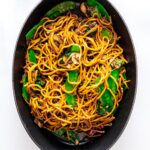

Lo Mein
Ingredients
- 2 tbsp light soy sauce
- 1 tbsp dark soy sauce
- 1 tsp toasted sesame oil
- 1 tsp sugar
- 1/2 tsp ground ginger
- 1 lb lo mein noodles or spaghetti prepared, see notes
- 1 tbsp oil
- 4 cloves garlic minced
- 1 cup mushrooms sliced, crimini preferred
- 1 small carrot julienned
- 1 cup snow peas
- 2-3 cup spinach baby spinach preferred
- green onions thinly sliced, to finish, as needed
Instructions
-
In a small bowl or measuring cup, whisk together the soy sauces, sesame oil, sugar and ground ginger. Set aside.
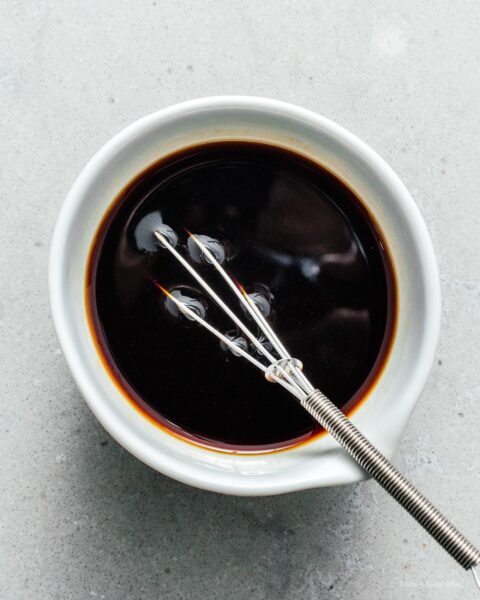

-
Heat the oil over medium heat and add the garlic and cook, stirring occasionally until slighly golden.
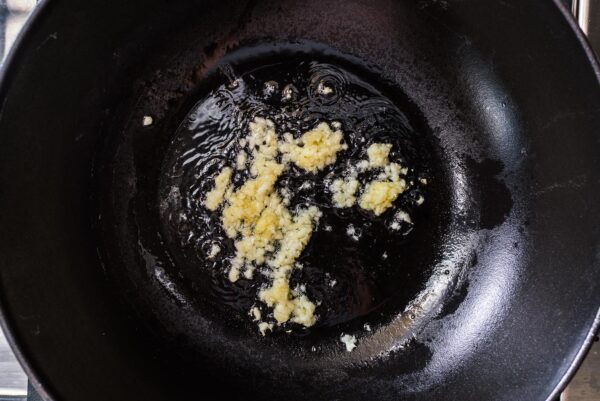

-
Turn up the heat to medium high and add the mushrooms, cooking and tossing occasionally, until soft.
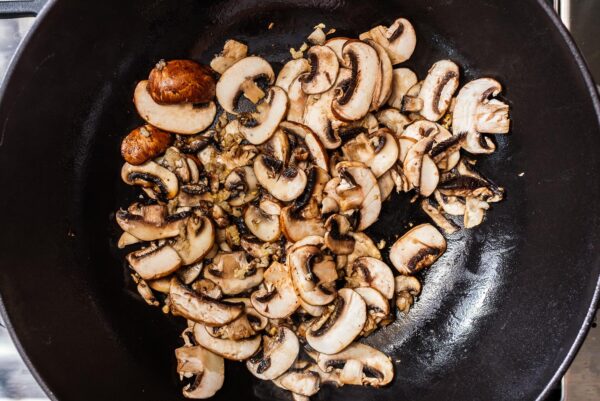

-
Add the carrots and snow peas and toss for 1-2 minutes, until tender crisp.
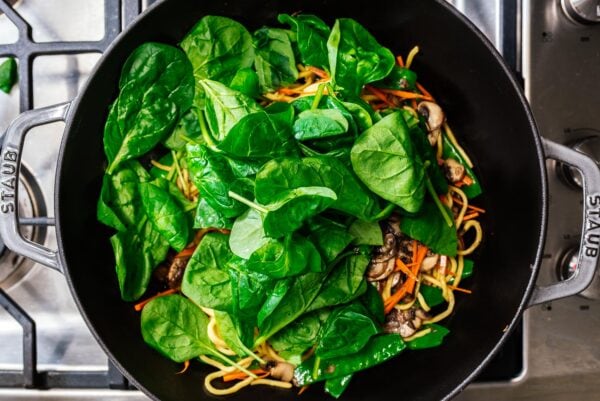

-
Mix in the noodles, spinach, and sauce. Toss until well combined. Taste and season with salt, if desired. Sprinkle on the green onions and enjoy immediately.
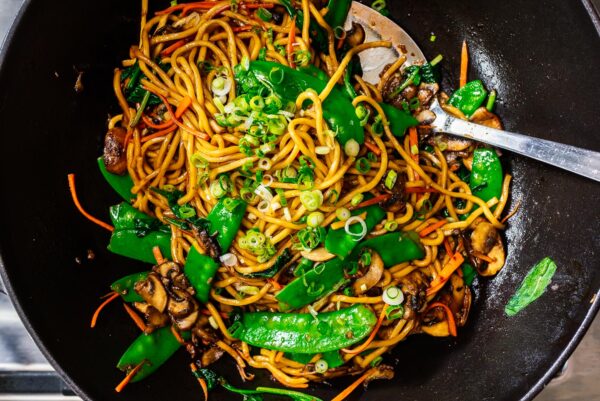

Notes
Estimated Nutrition
Calories from Fat 44










